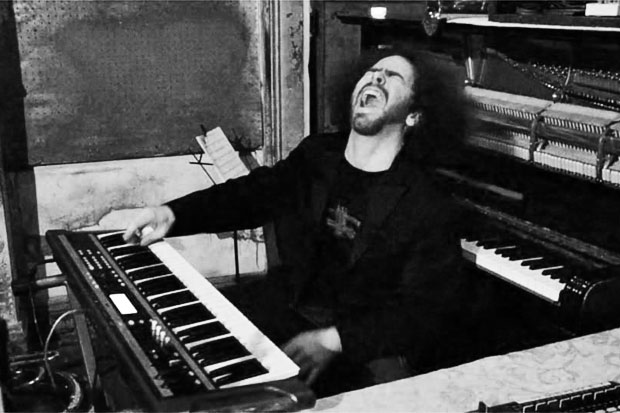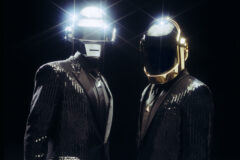Brassft Punk is digital love turned analog, a project that reimagines Daft Punk’s greatest hits as rollicking numbers for blatting New Orleans brass. The project — the brainchild of Earl Scioneaux III, the recording engineer for the legendary traditionalists Preservation Hall Jazz Band — started as a modest side hustle funded by Kickstarter, but soon became a full-scale phenomenon when the group released a record with Chicago’s pioneering Trax Records. To keep pace with the sudden popularity, Scioneaux has developed a frenetic live show that blends electronic and acoustic improvisation. On May 18, Brassft Punk will take their biggest stage yet with their early slot at Alabama’s Hangout Music Fest. Since Daft Punk have no tour dates booked at the moment, we spoke to Scioneaux about the technologic that gave these robotic melodies new life.
What first got you interested in electronic music?
When I got to school, I got into jazz. I was very academic with my music and studying the theory and the nuances of musical structure. So my first exposure to electronic music, even when I was in high school, I wasn’t so impressed, because a lot of the stuff, at the time, it didn’t work with my mind. A lot of it was very repetitive and it didn’t really speak to me. Then, around ’94 or ’95, a friend of mine introduced me to the IDM music that was coming out of England. Warp put out the Artificial Intelligence series; I got turned on to Squarepusher and Aphex Twin and Luke Vibert. It was this space in electronic music where things could be more cerebral. That’s what initially drew me in. Interestingly, I feel like electronic music as a whole has become a convergence of those polarities. The strictly dance stuff has more depth to it, and the IDM world has drifted more toward being danceable and not quite so out there. Overall, everything’s found that happy middle ground.
Did you know that you wanted to pay tribute to Daft Punk?
Basically, I was looking for, “What are the new classics?” And I wanted to redo them with an acoustic ensemble. So it wasn’t Daft Punk right out of the gate, but I knew that it had to be somebody that was well-known and ubiquitous, something that lots of people have been exposed to. I was revisiting lots of music in my collection — Björk, even Nine Inch Nails at one point — trying to figure out what really makes sense. When I got to Daft Punk, things started to come in focus. Because I realized that this is dance music. And the coolest ensemble I could put together was the New Orleans brass band, because they’re just so funky and hip. So I realized that both of these are dance, party music. This is a happy marriage.
How did the musicians react when you approached them with the idea?
Everybody was pretty open-minded about this. I don’t know that a lot of them knew who Daft Punk was, but they came to figure it out pretty quickly. The lead trumpet player on the record, his name is Wendell Brunious. I remember having this magical moment with him when we were on break during the session. We were sitting out back on the patio at the studio, and he said, “Man, these are some cool tunes. Who’d you say that was again?” I had to explain to him, halfway into the session, who Daft Punk was. It was kind of cool. That’s a guy who I feel like is such a musical guru. But it makes you realize, music is so vast, nobody can be familiar with everything.
What’s it like playing these songs live?
The album itself is just four songs; it’s definitely not enough for an entire live set. So when we play live, I get to explore more of the ways that electronic and acoustic music intersect. I’ll make these beds of electronic sounds and beats and whatnot, sometimes with Daft Punk samples in it, and then have the guys come blow over it, or drum over it. I’ll tweak the sounds of the acoustic instruments electronically with different kinds of effects. It starts to blur the line between what’s electronic and what’s acoustic. It’s different every time. I don’t know exactly what’s going to happen. I’m improvising the effects, the guys are improvising what they’re playing, and we get some really magical moments sometimes as those things evolve.
There couldn’t be a better time to release a Daft Punk tribute record; did you time this project with the release of Random Access Memories?
It’s absolutely a coincidence. This is an idea that I’ve been formulating for years. When I first determined what material I was doing, I wrote up a chart for “Harder, Better, Faster, Stronger” as a proof of concept, because I wanted to see if this was going to translate. That was January of 2011. I launched the Kickstarter for this in April or May of 2012, and even then Daft Punk hadn’t announced their album release. The way it timed out, I guess I got lucky. It definitely wasn’t planned.





